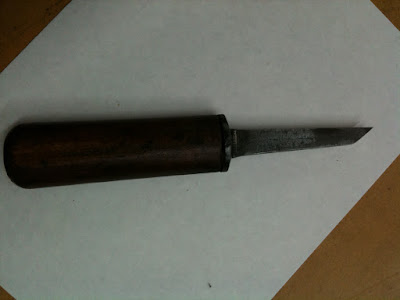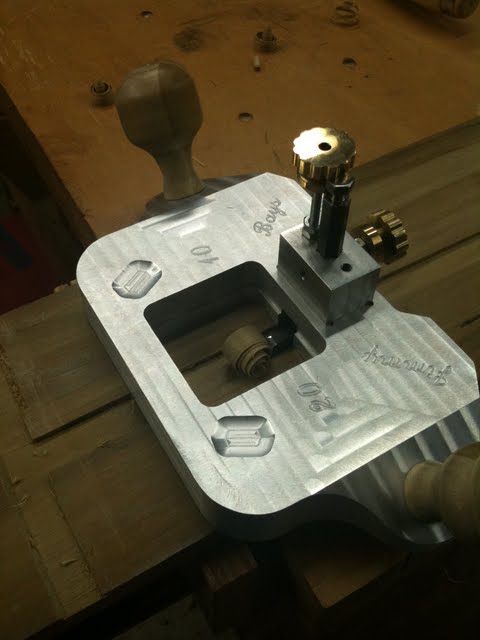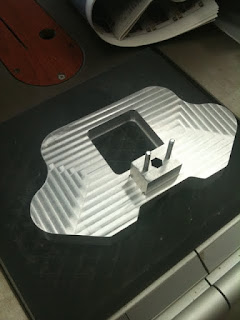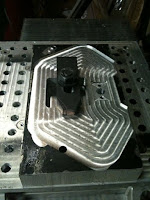I unwrapped her and gave her a quick sharpen, and a light bulb went on, it was the easiest mortise I had ever cut. Now I just need to find a 3/8" and a 1/2".
While I was on eBay, I decided to have a look at moving fillister and plow planes. Low and behold, what did I find but this beauty. Here she is straight out of the box.
I added a strike button to the top for the mallet, but I need to redo it. The previous owner, as is normal for the time, had his name stamped once on the toe, once on the top, and twice on the heel, but when I took the fence off for cleaning and such, I got another surprise. There, in pencil, was his name and a date.
Mr. Isaac McPherson owned my new baby in 1867, 144 years ago. Looking up the maker of the iron confirms this story. I love to see a tool that is so old, still be fit as a fiddle, and ready for another 150 years of service.
Just so you don't think I forgot about the plow plane, I have a bid in on a Stanley #45.
I also completed the last lesson before the final for The Hand Tool School this week. And here she is in all her knotty Alder glory.
As always, feel free to post any questions or comments in the section below. You could always contact me on Facebook or Twitter via the links on this page.
Until next time...
















